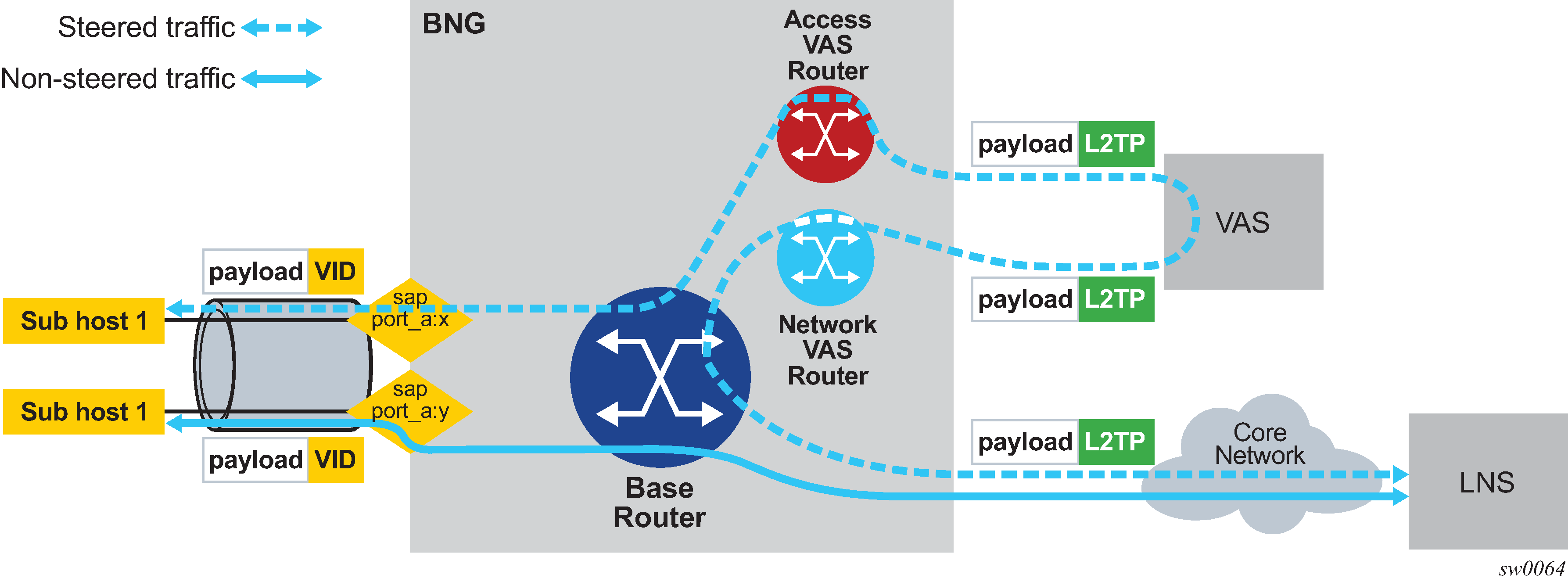Traffic steering on L2TP LAC allows wholesale providers to forward L2TP-encapsulated packets going to and coming from LNS to Value-Added Services (VAS).
Traffic steering on L2TP LAC consists of the following components:
A steering profile contains steering configuration (Access/VAS routers and next hop) information that is applied to the subscriber host for the PPPoE/L2TP session.
For steered traffic all PPP packets to and from the PPPoE host that have a steering profile attached are forwarded through VAS. PPP packets include LCP/NCP control packets, LCP echo and echo reply, and user data packets.
Non-steered traffic consists of packets for the L2TP control channel and PPP packets of the subscriber host that do not have a steering profile
For the base router (can also be a VPRN), the routing instance terminates subscriber host and L2TP tunnels or sessions to LNS
For an access VAS router, the routing instance forwards upstream (to LNS) steered traffic to VAS and receives downstream (to subscriber) steered traffic from VAS.
An access VAS router must be a VPRN. A base routing instance cannot be specified as an access VAS router.
For a network VAS router (optional), the routing instance receives upstream (to LNS) steered traffic from VAS and forwards downstream (to subscriber) steered traffic to VAS.
The creation of a network VAS router is not mandatory and a base router can also perform the same function.
In a network VAS next hop, the next-hop IP address to reach VAS from the network VAS Router or Base Router for downstream traffic. This address must be specified in the steering profile.
Figure: Traffic steering on L2TP LAC shows traffic steering on L2TP LAC.
